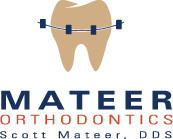Finally! My braces are coming off. I get to eat all those forbidden foods that I’ve neglected for so long. It’s been a tedious, hard road to a beautiful smile and straight teeth. I’ve sacrificed so much and can’t wait to see what they look like! And, the best part is that I don’t have to wear anything on my teeth ever again. Yippee! Wait, what? You’re telling me I have to wear a retainer now? It’s not an option – it’s a requirement? Aw, man. Do I have to?
The orthodontist responds by saying, “Believe me. The success of your orthodontic treatment depends upon you diligently wearing your retainer.”
Let’s take a closer look at why by answering a few common questions on this issue.
Now that my orthodontic treatment is complete, why don’t me teeth stay straight forever?
After completing your orthodontic treatment, your teeth will naturally want to move back to their post-treatment positions. It’s simply because your gums and bones have “memories” of your teeth, and they will want to push your teeth back into these remembered positions. While this fades over time, it can pose an issue up to 18 months post-treatment. Additionally, as we age our teeth will begin to show some signs of general wear and tear and may begin to overlap more as a natural drifting occurs. Around the age of twenty, the jaw performs its last growth spurt, which can leave teeth crooked.
What are retainers and how do they work?
 A retainer is simply a plastic or metal device that keeps teeth aligned after a patient has completed orthodontic treatment. They are specifically custom-molded to a patient’s mouth after completing treatment and are used to prevent teeth from moving back into their pre-treatment positions. Retainers keep teeth in their desired position (or retain them) using guidance and pressure. Since all patients have unique needs, we customize post-treatment plans specifically for you. Plans include not only which retainer is right for you, but also how long you will need to use it.
A retainer is simply a plastic or metal device that keeps teeth aligned after a patient has completed orthodontic treatment. They are specifically custom-molded to a patient’s mouth after completing treatment and are used to prevent teeth from moving back into their pre-treatment positions. Retainers keep teeth in their desired position (or retain them) using guidance and pressure. Since all patients have unique needs, we customize post-treatment plans specifically for you. Plans include not only which retainer is right for you, but also how long you will need to use it.
What types of retainers are there?
There are a variety of retainers that can be used at the end of orthodontic treatment. That said, there are two basic types: fixed and removable. The type of retainer you need depends on a number of factors such as the type of treatment provided, difficult movements accomplished, patient lifestyle, and patient compliance.
When and how long do I need to wear my retainer?
There are a variety of retention options and wear schedules available. Since all patients have unique needs, we customize post-treatment plans specifically for you. Most orthodontists agree that you should wear your retainer consistently for anywhere between three to 12 months post-treatment. You can then move to wearing your retainer only at night once your teeth have stabilized in their new position. You can plan on wearing a retainer nightly for anywhere between one and three years. Afterwards, wearing it two to three nights per week should maintain your hard-won results.
What will happen if I don’t wear my retainer as instructed?
If you miss a day here and there, it’s not a big deal. However, if you continually skip wearing your retainer, especially in the three years post-treatment, it can cause issues. If you skip or lose your retainer for a week, it’s possible to have some small amount of relapse. Like we said earlier, teeth can move back to their original positions without a retainer to provide guidance and pressure. Excessive time spent away from your retainer can reverse the results you sacrificed for during treatment, especially if you don’t use your retainer during the crucial first few years. In simplest terms, not using your retainer can result in teeth moving permanently.
What should I do if my retainer doesn’t fit anymore?
The most common cause of a retainer not fitting anymore is simple: people don’t wear them like they’re supposed to. However, your retainer may get damaged for one reason or another. If the cause of tightness is due to skipping, you can still wear your retainer as long as it goes over the teeth, even if it’s a tight fit. However, if you try to fit a too-tight retainer over teeth that have shifted too far, you can potentially break the retainer from exertion. If your retainer isn’t fitting as snugly as it once did, your best bet is to schedule an appointment with us as soon as possible to get fit for a new one. The longer you wait, you more likely the effects of your braces or aligners will be reversed.
As you can see, the success of your orthodontic treatment depends upon you diligently wearing your retainer. It prevents teeth from moving into their desired pre-treatment positions, and there are a variety of retainers and a variety of retention options to fit the unique needs of each patient. Now that we’d addressed that question, let’s look at another one.
Why Mateer Orthodontics?
Dr. Mateer is an experienced professional who prides himself on providing a caring and honest approach to orthodontic treatment for his patients. He and his staff are also committed to continuing education and state-of-the-art orthodontic treatment. At Mateer Orthodontics, we strive to not only provide the best orthodontic treatment but also to build a relationship with our patients that puts them at ease and makes the experience enjoyable. Imagine getting straight teeth while actually enjoying going to the orthodontist. This is our goal with every patient we see!
If you’re in the Commack area and are looking for more information on how braces can have a positive impact on your life and your smile, get in touch with us today! We are more than willing to answer any questions you have and would be happy to schedule a free consultation at our office. We’re here to get you started on the road to a straighter smile!


